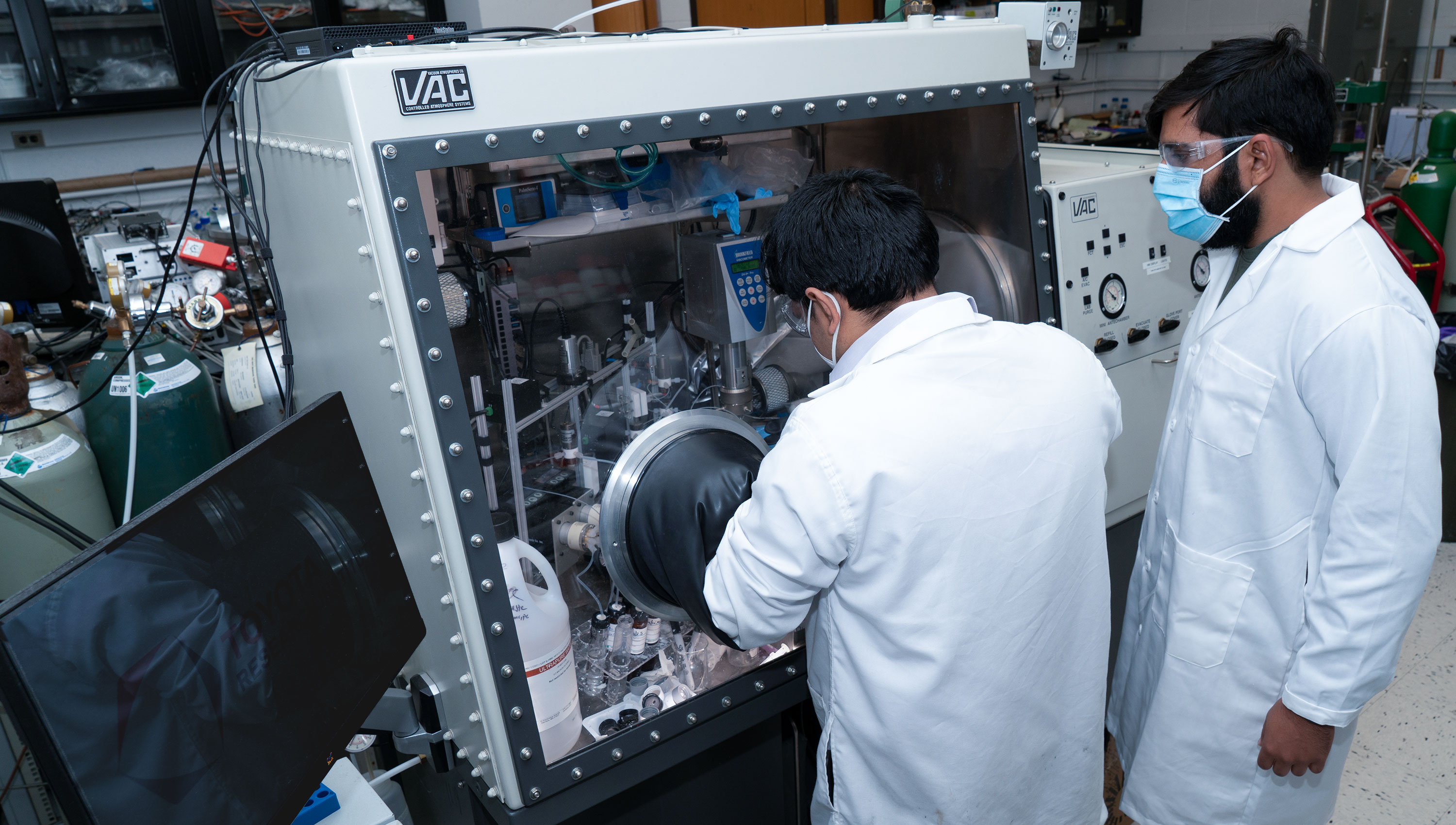How robots and AI are helping develop better batteries
A Carnegie Mellon team used an automated system and machine-learning software to develop fast-charging electrolytes that outperformed a standard one.

Around the start of the year, Carnegie Mellon researchers used a robotic system to run dozens of experiments designed to generate electrolytes that could enable lithium-ion batteries to charge faster, addressing one of the major obstacles to the widespread adoption of electric vehicles.
The system of automated pumps, valves, and instruments, known as Clio, mixed various solvents, salts, and other chemicals together, then measured how the solution performed on critical battery benchmarks. Those results were then fed into a machine-learning system, known as Dragonfly, that used the data to propose different chemical combinations that might work even better.
In the end, the system produced six electrolyte solutions that outperformed a standard one when the Carnegie researchers placed them into small test cells, according to a new paper in Nature Communications. The best one showed a 13% improvement over the top-performing baseline battery cell.
Developing better electrolytes is crucial for improving the performance, safety, and cost of batteries. Faster-charging batteries are especially important for making electric cars and trucks more appealing, as they can ease the annoyance of long delays at charging stations.
In recent years, research labs have increasingly coupled automated systems with machine-learning software, which identifies data patterns to improve at designated tasks, to develop materials ideally suited to particular applications. Scientists have tapped into these methods to identify promising materials for solid state electrolytes, solar photovoltaic cells, and electrochemical catalysts. Several startups have emerged to commercialize the approach as well, including Chemify and Aionics.
Historically, researchers in materials discovery have devised and tested options through some mix of hunches, informed speculation, and trial by error. But it’s a difficult and time-consuming process simply given the vast array of possible substances and combinations, which can send researchers down numerous false paths.
In the case of electrolyte ingredients, “you can mix and match them in billions of ways,” says Venkat Viswanathan, an associate professor at Carnegie Mellon, a co-author of the Nature Communications paper, and a cofounder and chief scientist at Aionics. He collaborated with Jay Whitacre, director of the university’s Wilton E. Scott Institute for Energy Innovation and the co-principal investigator on the project, along with other Carnegie researchers to explore how robotics and machine learning could help.
The promise of a system like Clio and Dragonfly is that it can rapidly work through a wider array of possibilities than human researchers can, and apply what it learns in a systematic way.
Dragonfly isn’t equipped with information about chemistry or batteries, so it doesn’t bring much bias to its suggestions beyond the fact that the researchers select the first mixture, Viswanathan says. From there, it runs through a wide variety of combinations, from mild refinements of the original to completely out-of-the-box suggestions, homing in on a mix of ingredients that delivers better and better results against its programmed goal.
In the case of battery experiments, the Carnegie Mellon team was looking for an electrolyte that would speed up the recharging time for batteries. The electrolyte solution helps shuttle ions—or atoms with a net charge due to the loss or gain of an electron—between the two electrodes in a battery. During discharge, lithium ions are created at the negative electrode, known as the anode, and flow through the solution toward the positive electrode, the cathode, where they gain electrons. During charging, that process is reversed.
One of the key metrics Clio measured and sought to optimize is “ionic conductivity,” or how readily ions flow through the solution, which directly affects how quickly a battery can recharge.
But an added challenge for commercial electrolytes is that they must work well across a variety of measures, including total life cycles, power output, and safety, and improvements in one area can often come at the cost of others.
In subsequent work, the Carnegie Mellon researchers hope to accelerate the robotic experiments, refine the machine-learning tools, and run experiments with multiple objectives, rather than a single performance goal.
The grand hope is that automation and machine learning could accelerate the discovery of the next set of breakthrough materials, helping to deliver better batteries, more efficient photovoltaics and more as the world races to drive down climate emissions.
Deep Dive
Climate change and energy
The problem with plug-in hybrids? Their drivers.
Plug-in hybrids are often sold as a transition to EVs, but new data from Europe shows we’re still underestimating the emissions they produce.
Harvard has halted its long-planned atmospheric geoengineering experiment
The decision follows years of controversy and the departure of one of the program’s key researchers.
Why hydrogen is losing the race to power cleaner cars
Batteries are dominating zero-emissions vehicles, and the fuel has better uses elsewhere.
Decarbonizing production of energy is a quick win
Clean technologies, including carbon management platforms, enable the global energy industry to play a crucial role in the transition to net zero.
Stay connected
Get the latest updates from
MIT Technology Review
Discover special offers, top stories, upcoming events, and more.